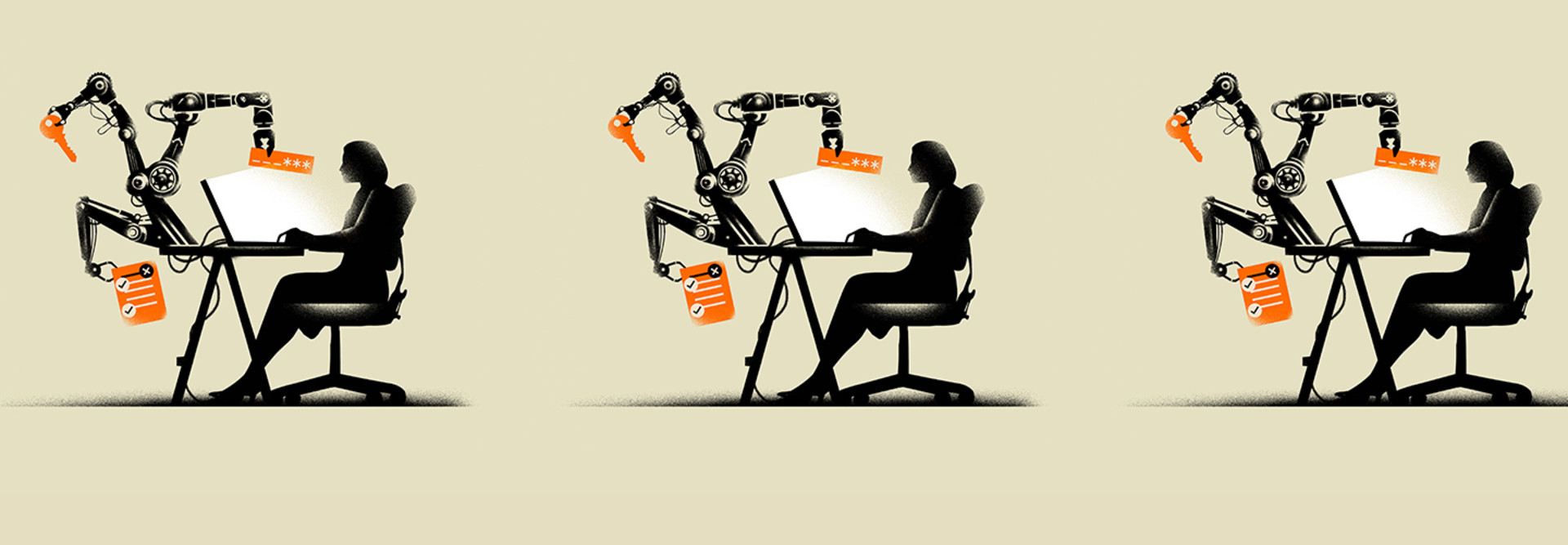How AI-Based Tech Improves State and Local Government
The topic of artificial intelligence gives many workers heartburn, as some experts predict it will replace people and eliminate many jobs.
The medical industry experienced this years ago. Radiologists were concerned that the use of AI would eliminate their jobs, as it could find cancers, brain bleeds and other issues faster than people could. As it turns out, AI is a fantastic assistant to the doctors, as it can discover problems with greater speed and accuracy than people can, enabling the medical staff to focus on treatment rather than diagnosis.
Similarly, there’s no reason to fear AI in state and local government. Instead, workers should embrace the technology, as it will offload many mundane and repetitive tasks from workers and enable people to focus on more strategic, higher-level initiatives. In a sense, AI-based tools can be thought of as the “no-collar workforce” that can do the things that may be a waste of time for people to do.
AI Can Aid with Highly Repetitive and Simple Requests
For example, AI-powered bots can answer simple questions from citizens looking for help. Bots can easily handle tasks such as directing people on where to go to reset passwords or renew a driver’s license instead of burdening a person with these tasks.
While bots have been around for some time, the use of AI is important for natural language processing to understand all the variations of a single question. Without NLP, programmers must code individual questions into a system. An AI-powered bot would understand “How do I reset my password?” and “How do I unlock my password?” essentially to be the same question.
While AI-based bots can answer some questions, agencies should not overuse them. Inquiries that are both high repetition and low complexity are ideal for a bot. A human should handle tasks that are somewhat complex, but that doesn’t mean AI cannot help. In such an instance, the role of AI would be to provide options as to an appropriate response. The worker could then choose one or disregard all of them. In all cases, the input from the human agent further refines the AI algorithms to make future responses more accurate.
AI Helps Save Time in Government
Another example of AI technology is in the area of process automation. Many state processes involve numerous steps with a high level of “human latency” from handing tasks off from one person to another. This could include citizen-facing services, such as approving permits or paying fines, as well as internal processes, like onboarding new employees or making payroll changes. The key is that machines would automate highly repetitive, mundane tasks.
This could include responsibilities such as checking a document to ensure everything is filled out correctly. An AI-based tool could scan the document, search for missing information and kick it back for more attention before it is processed for verification.
There are also benefits other than time savings. It’s been proved that repetitive tasks lead to high amounts of human error that can cause employee or citizen frustration. ZK Research estimates that the use of AI-based tools can save state workers at least 60 minutes a day or more, depending on job function. Government employees could use this valuable time for strategic initiatives, such as focusing on digital transformation or improving customer service.
MORE FROM STATETECH: Find out how state auditors can achieve digital transformation.
How to Determine When to Use AI Tools at Your Agency
Almost every state and local organization can benefit from AI-based automation, but change is often difficult. People may become so reliant on processes that it’s hard to see another way. Below is a checklist that can determine if an organization needs AI.
AI should be considered if the goals of a government agency include one or more of the following:
- Improve customer service with increased accuracy and faster responses.
- Reduce the number of human errors when processing information.
- Increase the number of hours spent on strategic initiatives.
- Improve employee satisfaction by offloading repetitive tasks.
- Integrate workflows to streamline processes.
How a state organization should implement AI is based on the level of comfort it has with the technology and its level of internal IT skills. Most large IT and cloud computing vendors offer AI solutions, enabling an agency to use off-the-shelf AI tools that automate processes. Adopting these solutions would fit AI into existing processes. The downside is that the AI algorithms and software require development, training, testing and implementation.
The opposite approach is to purchase AI-based tools, such as robotic process automation for internal processes or AI-infused contact center solutions for customer-facing activities. These solutions often work out of the box and have a gradual learning curve. But an agency may have to change its processes to adapt to the new tools, which could require retraining.
Whatever the approach, the best first step is to start small with a process that depends heavily on people and involves repetitive tasks. Measure the value, create best practices and expand the program into other areas. An agency then will see small wins where the value proposition is easy to understand. Workers will gain confidence that AI doesn’t take their jobs away but instead simplifies their jobs and makes them more interesting — which will drive wide acceptance










